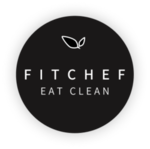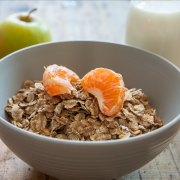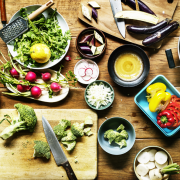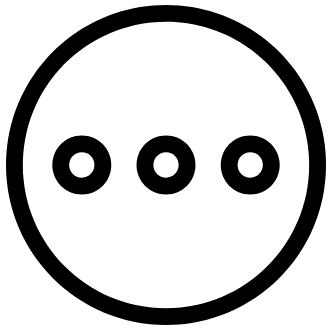 It is a well-known fact that our food system is overloaded with added sugar. Sugar falls under the carbohydrate food group, and, along with fat and protein, carbohydrates are one of the three food groups essential to human health. But the problem comes in when a big chunk of our carbohydrate intake is in the form of added sugar and natural, healthier sugars.
It is a well-known fact that our food system is overloaded with added sugar. Sugar falls under the carbohydrate food group, and, along with fat and protein, carbohydrates are one of the three food groups essential to human health. But the problem comes in when a big chunk of our carbohydrate intake is in the form of added sugar and natural, healthier sugars.Why do we need sugar?
Carbohydrates are the body’s first choice as a source of energy. The brain, nervous system and red blood cells exclusively use glucose (the sugar breakdown product of carbohydrates) for energy, making some carbohydrates like fresh fruit, vegetables, legumes and wholegrains an important part of the diet. These high quality, fibre-rich carbohydrates help maintain a healthy gut to decrease risk of diabetes, cancer, stroke and heart disease, and even obesity.
Sugar, too, is a carbohydrate. However, it is a nutrient poor, fibre-lacking type of carbohydrate that is packed with energy without helping us to feel fuller, making it a poor choice when consumed in excess, diluting the nutritional value of our diets with loads of empty and wasteful energy (kilojoules).
How much sugar do South Africans consume?
According to local data, sugar is one of the 10 most commonly eaten foods in the SA diet, alongside sugar-packed foods like cakes, biscuits, sweets, chocolates and cooldrinks. South African adults are eating as much as 60g of added sugar per day, a whopping 12 teaspoons. In children, most of the sugar in the diet comes from sugar added at the table (63%) followed by cooldrink, sweets, and jam (23%).
What are the health concerns with consuming too much added sugar?
While a little bit of sugar is not a cause for concern, the trouble is that our modern diets are packed with hidden sugars. Chocolates, sweets, ice cream, jam, sugary drinks and baked goods are obvious culprits, but added sugars also sneak into the diet in small amounts in breakfast cereals, cereal bars, sweetened yoghurt, sauces and condiments.
Sugar has very little nutritional value yet contains a lot of energy, making excess amounts of this highly refined carbohydrate not ideal for our health. Experts believe that the liver handles high intakes of added sugar in a way that is damaging to our health, particularly if overweight/obese or inactive. Sugar causes a quick spike in blood glucose, triggering a host of metabolic changes in the body like kickstarting the inflammatory processes that can over the long-term be linked to chronic disease like cancer, heart disease, and diabetes. Because high sugar foods are low in nutrients and fibre, this means that a high-sugar diet can be low in nutritional value, affecting our overall health and nutritional status. And of course, eating excessive amounts of sugar may also lead to weight gain This is because sugar doesn’t have much impact on our satiety (meaning you don’t get full on sugar) and is also high in energy. In addition, we tend to eat sugary foods with other high energy foods, such as washing down a chocolate with a sugary fizzy drink when at a party.
How much sugar can we have?
Most guidelines around the world say that small amounts of added sugars are ok. Our Food Based Dietary Guidelines suggest that South Africans should use sugar and foods and drinks high in sugar sparingly. The World Health Organisation (WHO) strongly recommend that both adults and children lower their intake of added sugar to 5 - 10% of our energy intake. This is the same as about 25 - 50g of sugar per day (5 - 10 teaspoons) for the average adult on a 2000kcal diet.
So, I can eat 50g of sugar a day?
To be clear, this doesn’t mean that we can add up to 10 teaspoons of sugar to our daily diets. It means that all sugars, both added sugar and natural sugar, should be limited to this amount. The terms total sugar, natural sugar and added sugars are often used interchangeably but are not all the same thing.
- Total sugars are made up of all sugars: added sugar + natural sugar (such as fructose in fruit and lactose in milk)
- Natural sugars include fructose found in fruit and lactose found in milk.
- Added sugars refers to all sugars that are added during food manufacturing and preparation. According to the Department of Health, added sugar is any sugar added to foods during the processing. This includes sugar, honey, molasses, sucrose with added molasses, coloured sugar, fruit juice concentrate, deflavoured and/or deionised fruit juice and concentrates thereof, fruit nectar, fruit and vegetable pulp, dried fruit paste, high-fructose corn syrup, malt, or any other syrup of various origins, whey powder, and milk solids.
Is fruit high in sugar?
In nature, foods containing sugars usually also contain fibre, vitamins, minerals and water, a combination which is actually very good for our health. Fruit, as well as dairy and some vegetables, are good examples of foods we should be eating more of, but which also contain sugar naturally. For example, fruit has fructose and dairy is made from lactose. These natural foods are rich in healthy nutrients, contain gut-healthy fibre, are low in energy, and are free from poor nutrients like cholesterol, added sugar, sodium and saturated fat. This is part of why a diet that includes fruit can help manage our weight, lower blood pressure, reduce the risk of heart disease, stroke and some cancers, and improve gut health. In fact, low intakes of fruit have been linked to over 520 000 heart disease deaths and more than 1.2 million stroke deaths each year.
For these reasons, it we cannot compare in the same light ordinary table sugar to nutrient-packed whole fruit with fructose or calcium-rich dairy with lactose. To ensure you don’t overdo the natural sugars either, limit to 2 - 3 fist-sized servings of fresh fruit per day and 2 – 3 servings of dairy per day. The focus should be on natural sugars like that found in fruit and dairy while keeping added sugar and the sugary treats for special occasions only. In fact, fresh fruit or a plain yoghurt with a dash of cinnamon or unsweetened cocoa powder can be a great alternative when managing a sweet craving.
How can I spot sugar on a food label?
Learning to read food labels is a vital skill in the quest to watch your sugar intake. If sugar (or one of the other common names for sugar) is listed as one of the first few ingredients on a food label, it’s safe to assume that the product is high in sugar. Other common names for sugar to look out for on food labels include:
- Sucrose
- Fructose
- Glucose
- Maltose
- Molasses
- High fructose corn syrup/ corn syrup
- Dextrose
- Honey
- Fruit juice concentrate/ fruit nectar/ fruit pulp
- Treacle
When trying to follow a healthy and balanced diet, follow the 80/20 rule: 80% of your meals should be healthy and balanced, but allow yourself some room (20%) for the occasional cheat. When having sugar, do so after a meal (to manage the rise in blood sugar) and in small, controlled portions. These brief moments of indulgence may help you stick to a prescribed, energy-controlled eating plan most of the time, leading to improvements in your weight and health overall.

 No added or artificial sugars
No added or artificial sugars The cleanest ingredient labels
The cleanest ingredient labels






